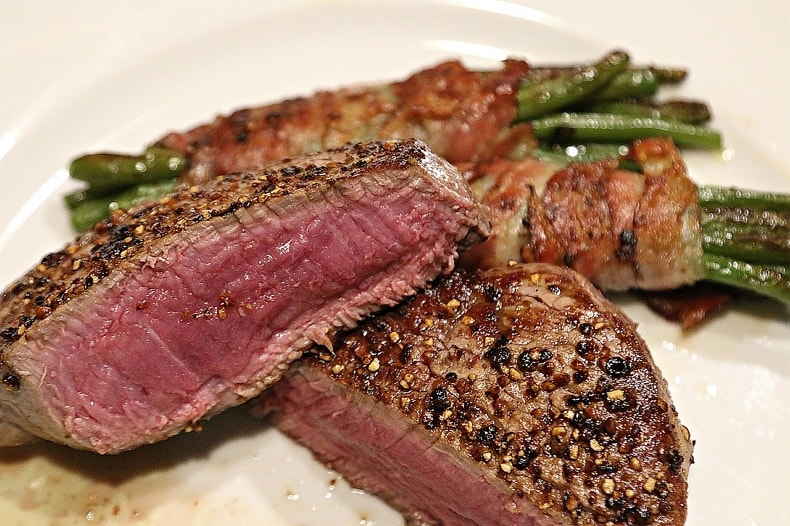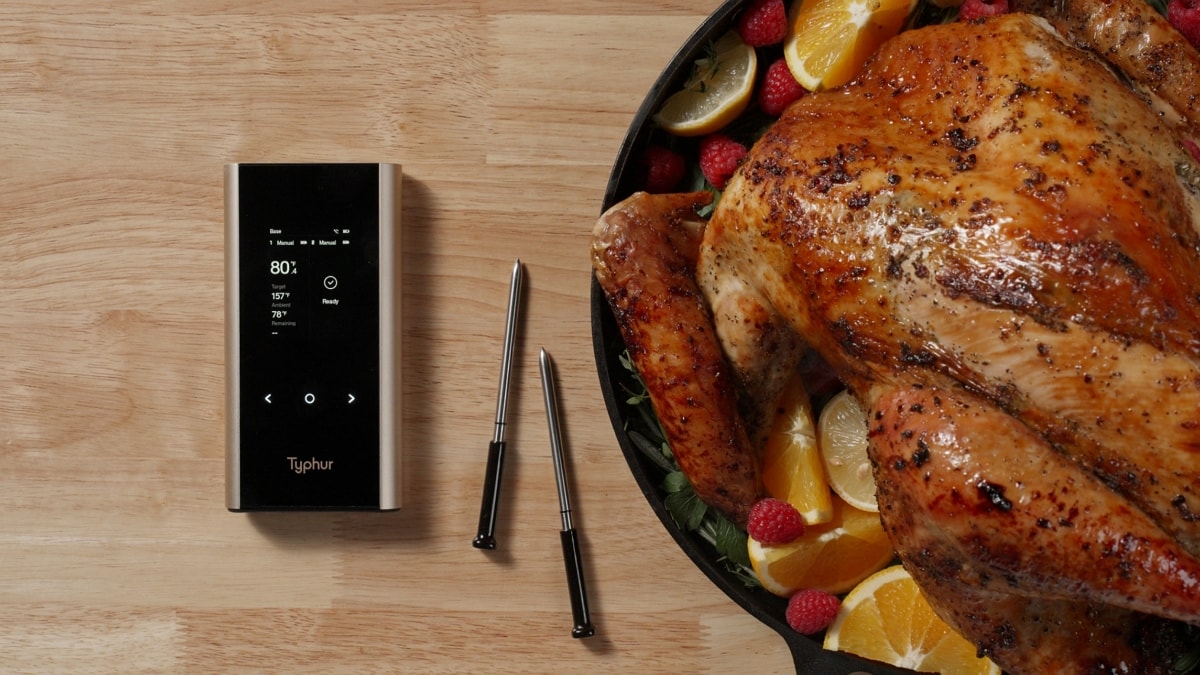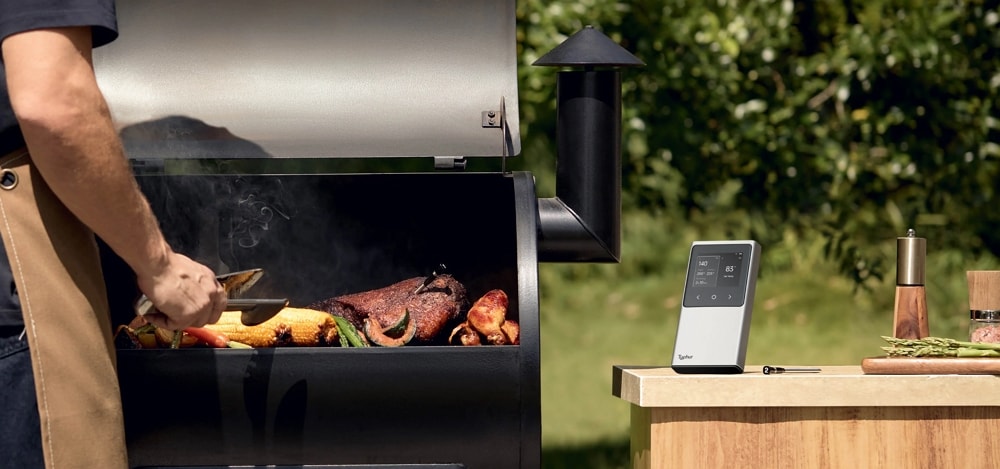Unlike beef or pork, where muscle fibers are long and tough, seafood muscle fibers are short and almost fragile. This is why seafood can flake apart so easily when cooked just right—and why it’s so easy to overcook if you’re not careful.
Planning to grill shrimp or sear tuna? Here’s the key to perfect internal seafood temperatures for a safe, delicious meal. (Spoiler alert: we use an instant-read thermometer.)
Table of contents
Different types of fish require different internal temperatures to achieve the desired flavor and texture. Below are some general guidelines for cooking different types of fish.
Salmon temperature
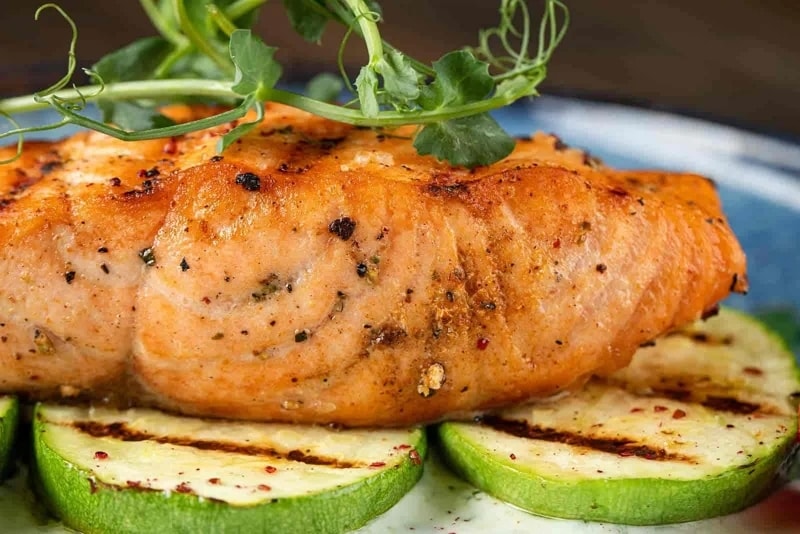
Salmon boasts vibrant color, succulent texture, and rich flavor. You can prepare it in many ways, from grilling and baking to sushi. Sashimi-grade salmon gets special treatment to ensure it’s safe to eat raw, but regular grocery store salmon needs cooking to the right temperature for safety.
The United States Department of Agriculture (USDA) recommends cooking fish to 145°F/63°C for safe eating. However, some chefs and home cooks pull salmon off the heat at 125ºF/52ºC for a moist, tender texture. Check our salmon internal temp guide.
Tuna temperature

Overcooked tuna is dry — similar to canned tuna — which is not preferable for a tuna steak. Serve tuna rare or seared at 115°F/46°C to achieve that perfect restaurant-quality tuna steak with a beautifully red center.
Halibut internal temperature

Cook halibut to 130-135°F (54-57°C) for a tender, moist texture with a slightly opaque center. Its firm, meaty texture handles heat well, perfect for grilling, baking, or pan-searing.
Shrimp internal temp

Overcooked shrimp can be rubbery and unpleasant to chew and the flavor may be bland. The USDA recommends shrimp reach an internal temperature of 145°F/63°C for safe consumption. To check the shrimp’s internal temperature, insert the probe of an instant-read meat thermometer in the thickest part of the shrimp to check the temperature.
Lobster temperature
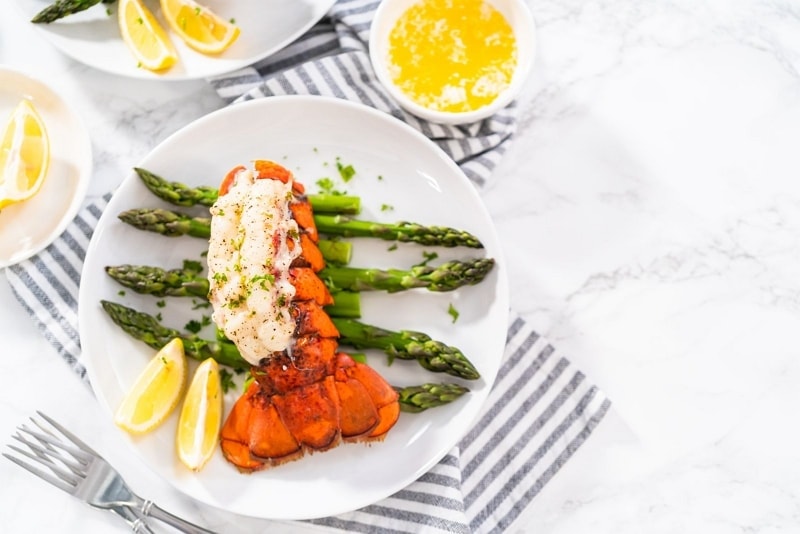
For lobster, if you prefer a firm texture, you can cook the lobster tail until it reaches an internal temperature of 140ºF/60ºC. To obtain the most precise temperature measurement, it is best to take a reading from the lobster tail, the thickest part of the meat. Claws should be cooked to a higher temperature of 150°F/60ºC than the tails to achieve the same texture.
Scallop temperature
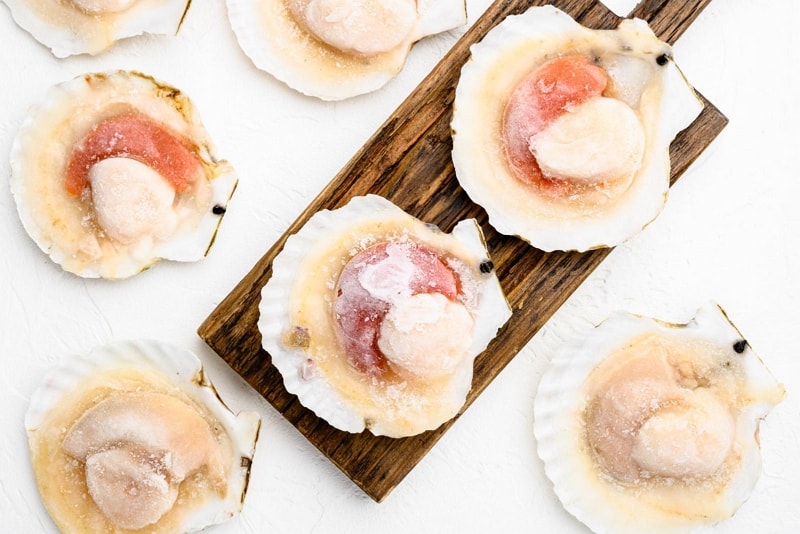
Scallops are delicate and should be cooked until the internal temperature reaches 130ºF/54ºC. A quick sear is enough — a few minutes for each side to get the doneness just right. Cooked scallops should have a golden-brown crust on the outside and look opaque or milky-white on the inside.
How to Check the Temperature of Cooked Fish
Before you learn the correct temperature for cooked fish, you should know how to check it. Measuring the internal temperature of fish is important to ensure that it has been cooked to a safe temperature and is free from foodborne pathogens.
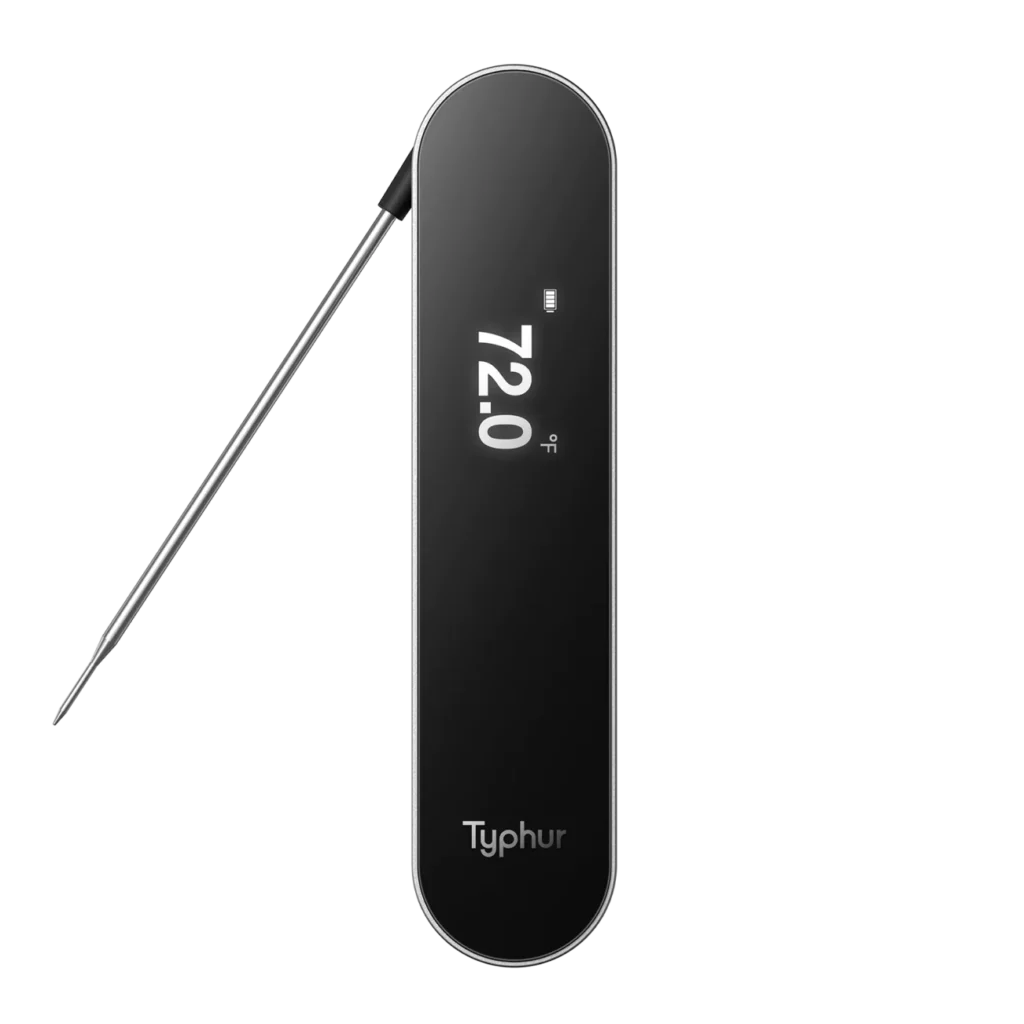
An instant-read meat thermometer is the best way to check the internal temperature of cooked fish because it provides quick and accurate readings as well as lets you monitor the cooking progress without having to cut into the fish. All you do is place the probe in the thickest part of the fish and it will display the temperature.
Instant-read meat thermometers, like the Typhur InstaProbe food thermometer, make taking the internal temperature of cooked fish easy. The InstaProbe is incredibly accurate (±0.5°F), providing precise temperature readings in 0.5 seconds without ruining the fish.
Final Thoughts
Make it safe to taste.
Achieving the perfect temperature when cooking fish is essential for ensuring that it is safe to eat whilst retaining its texture, aroma, and flavor. By following the guidelines provided above and using a meat thermometer to check the internal temperature of the fish, you can create consistent and delicious results every time.

